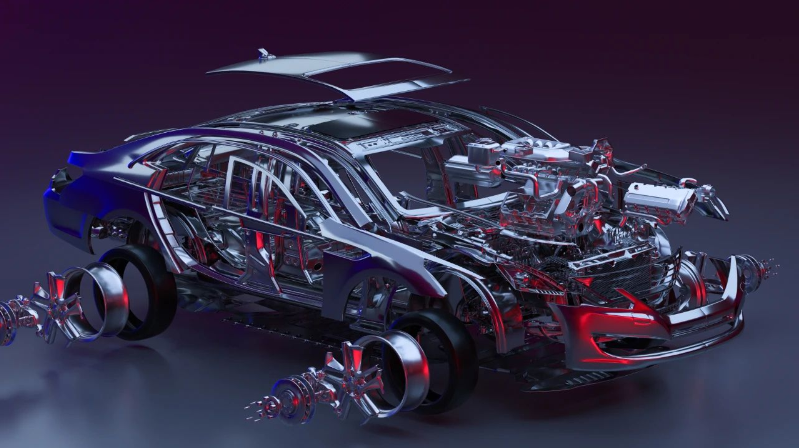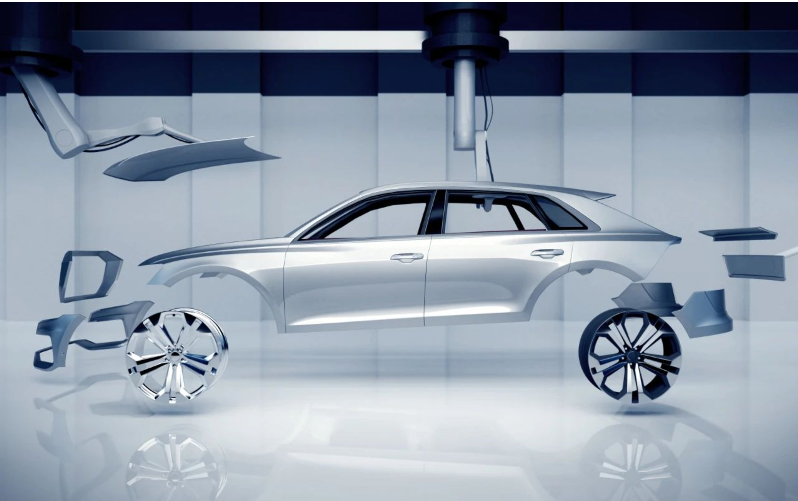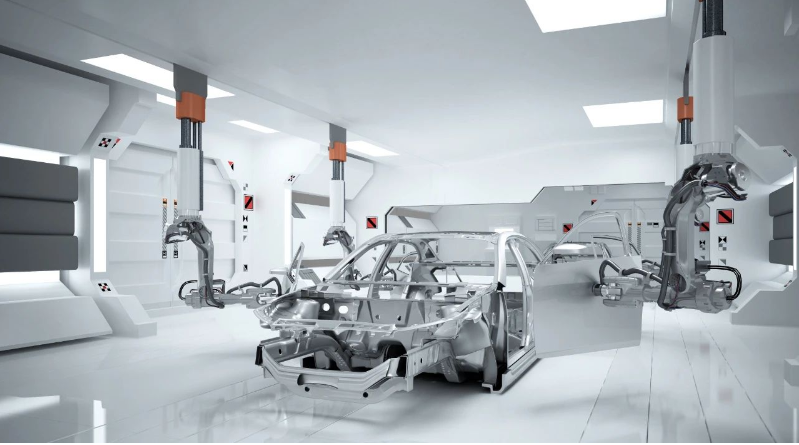"u.s. 'de-configuration,' china's 'roll' configuration: The Survival Logic of 'Basic Version' Models Changes"
Due to the changing international trade rules, high inflation, and soaring interest rates, the average transaction price of new cars in the United States has risen to nearly $50,000 (approximately 360,000 RMB), continuously raising the threshold for consumers to purchase a car. In the face of this dilemma, automobile manufacturers are trying various methods to control costs and stabilize prices, with "simplifying configurations" becoming the most realistic survival strategy.
From replacing manual air conditioning with automatic, using synthetic materials instead of leather for the steering wheel, to cutting high-end audio systems and reducing wheel sizes, the "configuration downgrade" comes in various forms. Tesla is pushing for the base model of the Cybertruck, removing standard features worth nearly $10,000 (about 72,000 RMB), replacing all-wheel drive with rear-wheel drive, swapping leather seats for fabric, canceling the rear touchscreen, and reducing wheel size from 20 inches to 18 inches. Mazda and Hyundai have both added or reintroduced entry-level models, while Mini has launched a limited edition "Oxford version," bundling core features and unique designs at a price several thousand dollars lower than the base model.
The reduction strategy of car manufacturers is primarily to provide options for those consumers who want to buy a new car but have tight budgets (especially to avoid the risks of the second-hand market). The automotive industry market research organization AutoPacific's "Future Attribute Demand Study" (FADS) surveyed over 14,000 consumers planning to purchase a new car, revealing the core demands of the "pragmatic group" with budgets ranging from $25,000 to $35,000 (approximately 180,000 to 250,000 RMB).
"Subtraction" takes the lead: luxurious features give way, basic functions rise to prominence.
Research has found that for this group of "budget-conscious" buyers, beautiful and luxurious seat interiors, exaggerated and flashy exterior kits, and immersive cockpit technology are not as important. Instead, front-wheel drive, basic audio systems, fabric seats with various manual adjustment functions, and traditional mechanical or analog instrument panels are what these buyers truly favor.

It can be said that extravagant upgrades are no longer favored, and "just enough is good" has become the guiding principle. However, when it comes to safety features, the "pragmatists" firmly regard them as necessities. Whether it is passive safety (such as front and rear parking sensors, with demand around 29%-32%) or active safety (such as rear cross-traffic alert with automatic braking, with demand around 30%-32%), the demand from "pragmatists" is not significantly different from that of buyers with higher budgets.
For "popular" advanced driving configurations, such as high-level assistance systems that can "take over" driving tasks (like adaptive cruise control with lane centering), the interest of the "pragmatic" group is significantly lower than that of the higher-budget group, by about 6%-7%.
In the "Top 10 Most Desired Car Features," the needs of the "pragmatic" buyers and potential buyers with a budget over $35,000 are almost the same, but the rankings differ. For example, about 34% of "pragmatic" buyers want a sunroof/panoramic sunroof, ranking it 6th on their list of needs, while buyers with a higher budget are more focused on features like driver's seat memory, 110V power outlet inside the car, and rear window sunshades.
AutoPacific's Product and Consumer Insights Manager, Robby DeGraff, believes that in the face of economic uncertainty, automakers need to reassess the standard equipment lists for models in the price range of $25,000 to $35,000. Eliminating some non-essential high-cost features can better meet the limited budgets and core needs of the target audience.

"The Ideal Vehicle of the Pragmatists"
AutoPacific believes that potential consumers purchasing new cars priced between $25,000 and $35,000 are primarily from the Millennial generation (31%) or the Baby Boomer generation (29%), with a median household income of around $50,000. Over half (57%) are women. They mostly live in suburban areas and are childless families. More than a third (35%) are first-time buyers/leasers of new cars. They are relatively conservative and practical, focusing on fixed expenses such as monthly payments. The average daily driving distance is below 32 kilometers, primarily for commuting, long-distance driving, leisure driving, and highway conditions, with daily usage involving pets and one adult passenger, while the rear seat usage is low.
For the "ideal vehicle," the "practical crowd" has a higher acceptance of sedans and prefers mature and reliable gasoline engines. Although 88% of them already own gasoline vehicles, only 20% of respondents hope that their new car will be a hybrid model, and 5% would choose a pure electric vehicle. Regarding vehicle appearance, they reject LED welcome lights, glowing brand logos, or oversized glass sunroofs; in terms of interiors, fabric seats and manual adjustments are their preferred choices. The cabin layout emphasizes practicality over design, requiring the retention of physical buttons or knobs, and is equipped with traditional instrument panels and appropriately sized central control screens. Due to their habit of using mobile connectivity, there is no strict requirement for built-in navigation systems.
The "pragmatic faction" believes that features such as heads-up display (HUD), high-end brand audio systems (Bose, Harman Kardon, etc.), and in-depth connectivity services that require additional subscription fees are "dispensable" options; while wireless charging pads, front seat heating/ventilation, universal 110V power outlets, driver's seat memory functions, and some active safety features (such as rear cross-traffic alert with brakes, rear automatic braking, lane-keeping assistance, and rain-sensing wipers) are "desirable but not essential" options.
Ed Kim, President and Chief Analyst of AutoPacific, stated that in the current economic environment, ensuring the "practicality" and "affordability" of entry-level and mainstream mid-range models is crucial for establishing long-term relationships with price-sensitive consumers. However, automakers still need to upgrade configurations across all model levels and provide high-end features, which will help guide entry-level buyers towards upgrading to higher-end models in the future.

The different logic of China's "basic models"
When American car manufacturers and consumers seek a balance in "downgrading" features, the approach in China’s 180,000-250,000 yuan (corresponding to the 25,000-35,000 USD range in the U.S.) market is completely different. In the Chinese market, the 180,000-250,000 yuan segment is the core battlefield for A+ class sedans, mainstream compact/mid-size SUVs, and some high-cost performance new energy vehicles (especially hybrids). The competition is extremely fierce. Car manufacturers are putting in significant effort to offer consumers more and "higher-end" configurations. Moreover, Chinese consumers have a noticeably stronger basic demand for "technological feel" and "smart connectivity," so even the "base models" in this price range almost universally come with large screens, basic intelligent driving features (such as ACC + AEB), 4G connectivity, and mobile app control, which have become almost standard or highly anticipated items. This stands in stark contrast to the minimalistic style indicated by American research, which shows a preference for "analog instruments + buttons + no navigation."
At the same time, this price segment is the main battlefield for China's new energy vehicles, especially plug-in hybrids and range extenders. In addition to providing basic range and power performance, car manufacturers often aggressively equip smart cockpits and driving assistance features as standard to form core competitiveness. Therefore, for Chinese consumers in this price range, practicality, reliability, and high cost-performance ratio are fundamental. Simply "reducing configurations and lowering prices" have limited appeal; it is also necessary to highlight the brand's core values: a reliable powertrain system, practical space, a rich and useful configuration, good reputation, and after-sales service. They not only need "visible benefits" but also "usable configurations."
The uncertainty in the global automotive market is driving car consumption to return to rationality. Whether in the United States or China, the "pragmatic" group in the price range of $25,000 to $35,000 (180,000 to 250,000 RMB) is crucial. Their pursuit of "practicality," "reliability," and "high cost-performance ratio" is core. However, there are significant differences in the definition and expectations of the "basic model" between American and Chinese consumers—Americans tend to favor a minimalist practicality of "good enough," while the Chinese demand a balanced sense of value that includes "practicality above all, with technology and features not to be lacking."
Automakers need to deeply understand the unique needs of local target users and find a delicate balance that aligns with local market logic between controlling costs and providing core value. In the Chinese market, the competition around the value of "basic models" is particularly intense, and the outcome will profoundly test automakers' insight into and ability to meet the real needs of local consumers. Those who can create a high-value "cost-performance king" that truly meets the demands of the "pragmatic" segment will be able to win valuable market share and user loyalty in a challenging market environment.
【Copyright and Disclaimer】The above information is collected and organized by PlastMatch. The copyright belongs to the original author. This article is reprinted for the purpose of providing more information, and it does not imply that PlastMatch endorses the views expressed in the article or guarantees its accuracy. If there are any errors in the source attribution or if your legitimate rights have been infringed, please contact us, and we will promptly correct or remove the content. If other media, websites, or individuals use the aforementioned content, they must clearly indicate the original source and origin of the work and assume legal responsibility on their own.
Most Popular
-

At Least 44 Dead in Century-Old Fire! Questioning Hong Kong's Hong Fu Garden: Why Has the Path to Fire Resistance Taken 15 Years Without Progress?
-

Satellite chemical's profits surge! can the 26.6 billion yuan high-end new materials project meet expectations? a review of progress on four major projects
-

Key Players: The 10 Most Critical Publicly Listed Companies in Solid-State Battery Raw Materials
-

Estun Turns Profitable in 2025 Half-Year Report, Industrial Robot Shipments Rank First Among Domestic Brands
-

Avatr Files for IPO on HKEX, Plans to Complete Listing in Q2 2026






